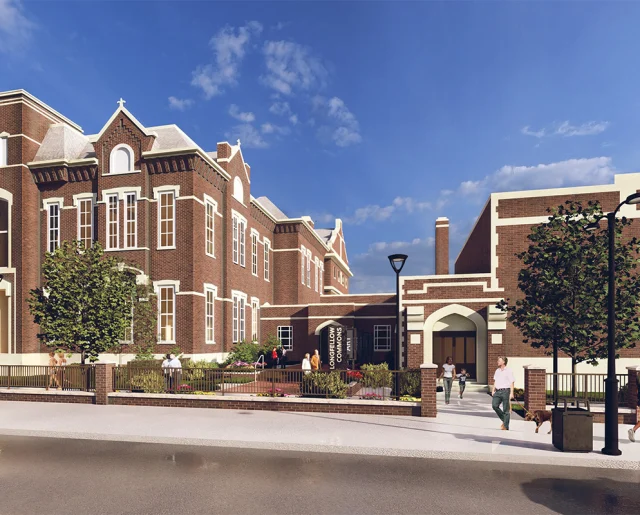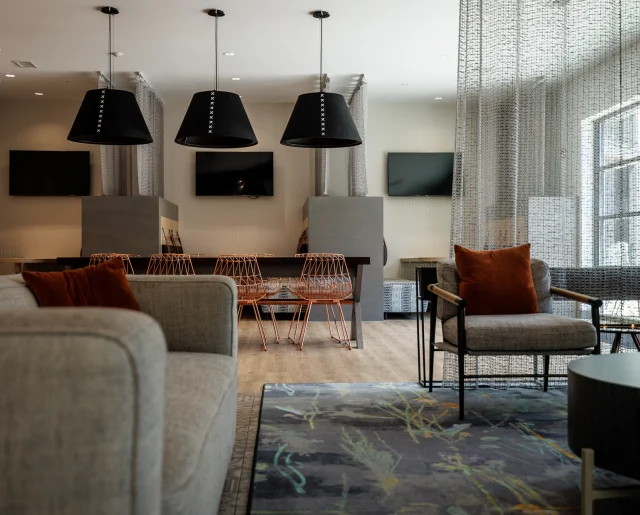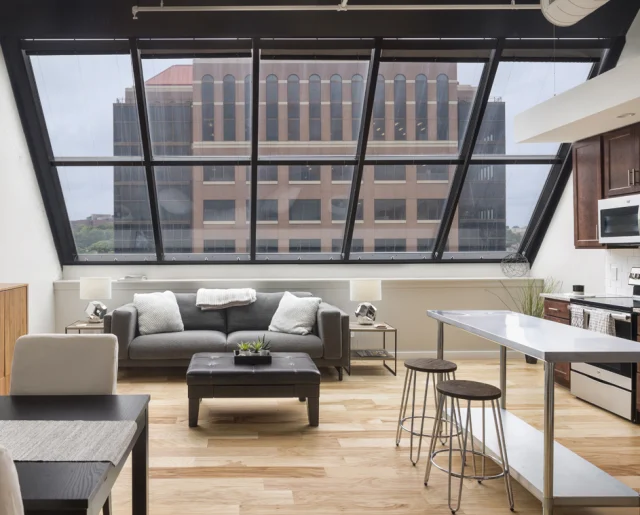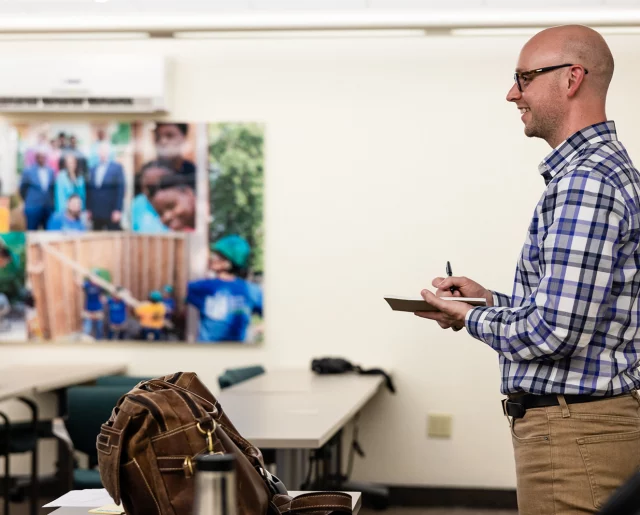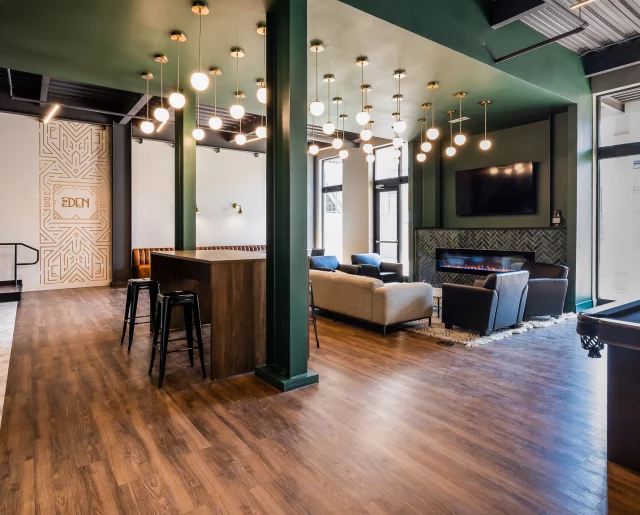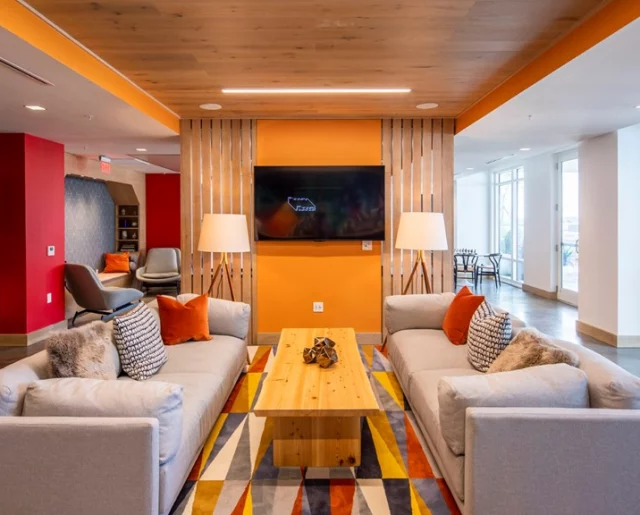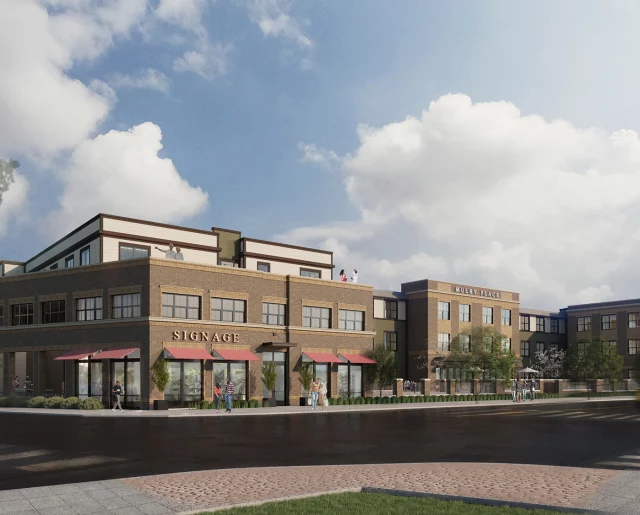Housing is a Human Right

Last week I had the honor and privilege of sitting down at a table and sharing an afternoon with some of the city’s most influential and innovative leaders in the space of affordable housing, joined together with one shared mission in mind – housing is a human right.
This 2022 Columbus Foundation “Big Table” Conversation was the most powerful one I’ve had yet, speaking to the timeliest topic while our city is in the face of an affordable housing crisis, with an existing need coupled with the current and anticipated exponential population growth.
It’s more important now than ever to recognize that together we are stronger.
MA Design recently officially changed my title to Market Lead + Design Strategist for Affordable Housing specifically, signaling the significance the firm, our city, and this country, are now placing on the need for focus in this underserved area.
As a reminder, affordable housing isn’t limited to a particular economic segment, but instead represents an individual or family not exceeding 30% of their total income on housing costs and utilities, affordable housing is attainable housing!
I could not be prouder of the outcomes of our positive discussion that took place, with attendees from mayors to city officials, developers, non-profit leaders, and more.
Our group took time to make gathering a priority in an effort to find answers for affordable housing now, and solutions for what the future of housing for all looks like, with a focused conversation centered around these five main topics:
- How do you manage NIMBYism (Not in My Backyard)?
- Is affordable housing meant to be a permanent solution?
- When considering modularity for building, what has more power – the pros or cons?
- What cities can we look to that are doing well with affordable housing – and which aren’t?
- What will the impact of Intel be on the affordable housing crisis in the Columbus metro area?
From these topics, and the leadership points made, these are ten of my top takeaways:
- Housing is a human right. Period.
It’s deplorable the way some people are forced to live because of the astronomically growing housing costs in our Columbus communities and it doesn’t have to be that way. From city officials to architects, developers, neighbors, and beyond, we need to band together in support of creating homes for all families.
2. Attainable – not just “affordable” – is what we’re after.
We need to work together to shift stigmas to strength, and moving towards the word “attainable” slows people down from any negative preconceived notions they might have around “affordable” housing. In a direct quote from Yarmoir Steiner, CEO of Steiner + Associates, in our conversation, “These are productive people, working to raise their families, and bring their lives up.” Let’s recognize them as human beings, not just a statistic.
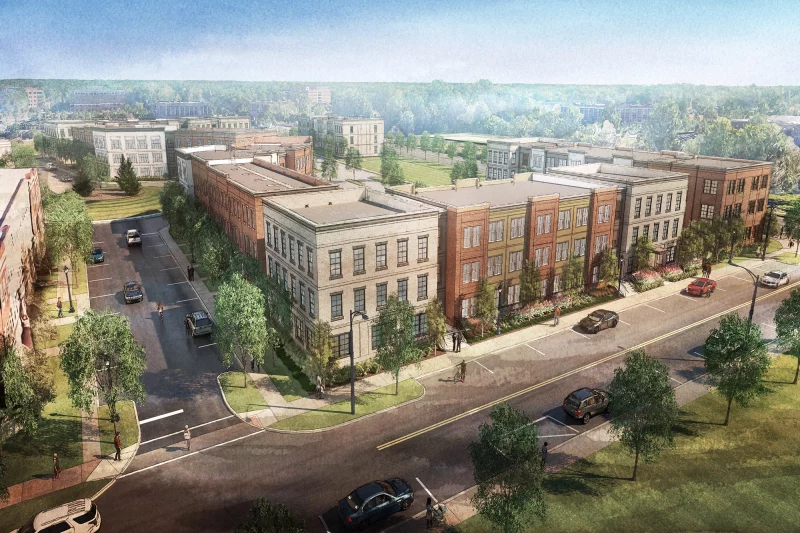
Easton Place Homes Affordable Housing
3. Getting comfortable with density has a positive impact on a more sustainable future.
People get uncomfortable immediately with the idea of building upwards – but we must challenge people to have a cause for pause, choosing to consider the key factors that make density more sustainable. Density reduces the acreage of green space required to commodore, green design decreases carbon footprint, minimizes commute time, and allows more leverage for the implementation of green building design concepts.
4. The age demographic of 18-45 is under-represented in the community.
This is the key age range we must focus on, educating the community and finding the right partners to build the appropriate projects that will help solve this identified underserved population.
5. Constructive versus combative community input.
With neighborhood zoning commissions having as much say as they do, it’s important to consider if these groups are reacting or responding. Reacting often comes immediately, based on biases and existing beliefs (stigmas), whereas a true response comes with time to consider the new information being presented at the time. Oftentimes, NIMBY-ism (Not in My Back Yard) slows down the inevitable project and requires a high level of VE (Value Engineering) that does little more than disintegrate and disengage the original intent, and integrity, of the project.
6. Affordable housing is not cheap to build.
There is already a clear barrier to entry – Habitat for Humanity CEO EJ Thomas shared that housing costs for the non-profit’s 2022 home builds have increased 40% in the last two years alone. The government is doing what it can do to keep up, but as individuals, and collectively as a community, by supporting efforts for integrity driven affordable – and attainable – housing solutions, we are contributing to minimizing the barrier to building and allowing those that need it most to be supported.
7. No two people are the same.
Sue Darby, the Senior Vice President of Housing for YMCA Columbus shared that the non-profit has served over 41K individuals with homelessness in the Columbus community, and they’ve never heard the same story twice. Individuals – and families – that are unable to find a place to live due to rising costs and unrealistic pricing are without a home, leaving this vulnerable population even more vulnerable. We have to take the time to individualize what that person needs and what they feel their barriers are for moving forward; they’re experts in their own lives. A great example is a recent partnership with Columbus-based Sprout5 to include child care in the bottom level of an affordable housing apartment unit, expanding the support of the building’s residents beyond just their space, and in doing so, creating a place of community.
8. Integrated, not segregated.
Recent ULI (Urban Land Institute) numbers show Columbus is one of the most segregated cities in the country. Education must be going on more at a local level – and has to permeate society to be acquired. A lot of times, people have read about projects before they’ve been properly proposed to neighborhood committees, and are critical versus curious. Listening – and learning – as much as possible, while considering supportive housing solutions – is the answer to living an integrated future together.
9. It’s time to consider modularity in a committed way.
Imagine Ikea, without you having to assemble anything. That’s the idea of modular housing, and it’s an idea that could change the future of affordable – and attainable – housing for the better. Modular construction cuts cost by 70%, but for it to be effective homeowners would have to pick pre-selected designs – like a car selection. By moving towards modular, Ohio could build 1.4x more units for the same cost. The key is the need to organize the demand to be continuous at least for a few years, so the factory runs continuously and the manufacturer needs to know there will be continuous demand for a while.
It’s a different way of dropping home and turning around is as quick as 45 days, with duplexes in 2022 in Ohio taking approximately 120 days to turn units; immediately allowing two families to move in can immediately plug in and go.

Mulby Place Affordable Housing
10. Intel is happening whether or not you’re ready for it.
Intel is projected to bring in 1 million new residents in the next 10 years – 2.5 million in total, with an AMI (Average Median Income) of Intel employees at their Licking County center being $130K.
For reference:
AMI of Bexley $109,000
AMI of Columbus $55,000
Franklin County AMI $45,000
Licking County AMI $70,00
State of Ohio AMI $58,000
Currently, there are 47 low-income housing apartment communities offering 2,248 affordable apartments for rent in Licking County, Ohio.
With all of these metrics in mind, how can we remove ourselves from metrics and bring the human side to incorporate elements that improve the quality of living of residents?
Conclusion
This top ten recap only scratches the surface of the brilliant minds and powerful thoughts shared during the 2022 MA Design Big Table Conversation around Affordable (Attainable) Housing, and my hope is that it too ignites something in you.
If you’d like to join the conversation – or continue these thoughts – please reach out to me at rolandom@designwithma.com.
Now more than ever as we work to solve the affordable housing crisis in the Columbus community, it’s important to remember that together we are stronger.

